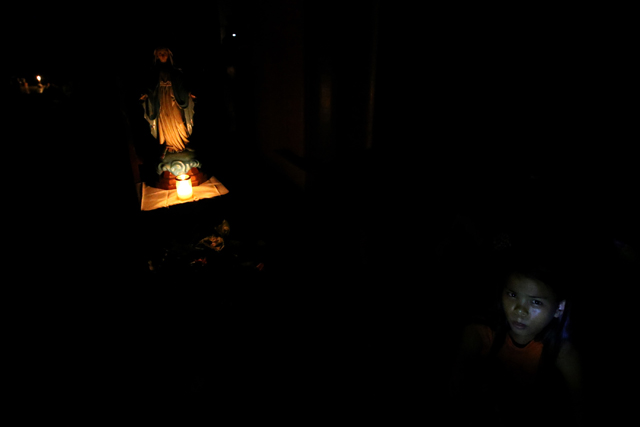SUMMARY
This is AI generated summarization, which may have errors. For context, always refer to the full article.

WASHINGTON DC, USA – Thousands of women and children in the Philippines risk falling prey to human traffickers in the aftermath of last month’s catastrophic typhoon, lawmakers and the chief US aid agency warned Tuesday, December 2.
A US congressman returning from a visit to the storm-ravaged island nation said that while Filipino authorities and US forces were helping vast numbers of storm victims, more attention was needed to thwart criminal opportunists taking advantage of the chaos after Super Typhoon Haiyan roared ashore.
“The most vulnerable — women, children, the elderly, and those with special needs — always fare worst during disasters,” Republican congressman Chris Smith, who led the three-member delegation to the disaster zone last week, told a House Foreign Affairs subcommittee.
At particular risk of sex trafficking are vulnerable people “who over a longer period of time may have lost some hope,” said Smith.
Such persons in the Philippines, many among the thousands transported out of the disaster zone to cities like the capital Manila, could fall victim to offers of work in Saudi Arabia or Korea, Smith said, only to find themselves with “an engraved invitation to a hell on Earth.”
Washington considers the Philippines as not in full compliance with minimum standards for eliminating trafficking. The State Department’s 2013 trafficking report describes it as a source country for sex-trafficking and forced labor, and that “child sex tourism remained a serious problem” there.
Last year, a United Nations envoy said the Philippines has failed to curb the huge problem of human trafficking in recent years, despite high-profile government efforts.
Poor law enforcement and crushing poverty meant many men, women and children were still being trafficked, both internally and overseas, said Joy Ngozi Ezeilo, the UN’s Special Rapporteur on Trafficking in Persons, during a 5-day visit to the Philippines in November 2012.
Protect the children
The US Agency for International Development, which for years has worked with the government of the Philippines to reduce human trafficking, also sounded the alarm at the Tuesday hearing.
“We are watching this very closely,” Nancy Lindborg, the USAID’s assistant administrator for Democracy, Conflict and Humanitarian Assistance, testified.
“To protect the children of the central Philippines during this time of heightened vulnerability, the government of the Philippines and the international community will need to make every effort… to ensure and strengthen local and national protective services.”
That includes creation of safe spaces for women and children, and programs that help identify, trace and reunify unaccompanied children, she said.
Washington has committed nearly $60 million worth of typhoon-related aid to the Philippines, Lindborg said.
More than 7,400 people died or remain missing in the aftermath of Haiyan, one of the most powerful typhoons on record. – Rappler.com
Add a comment
How does this make you feel?
There are no comments yet. Add your comment to start the conversation.